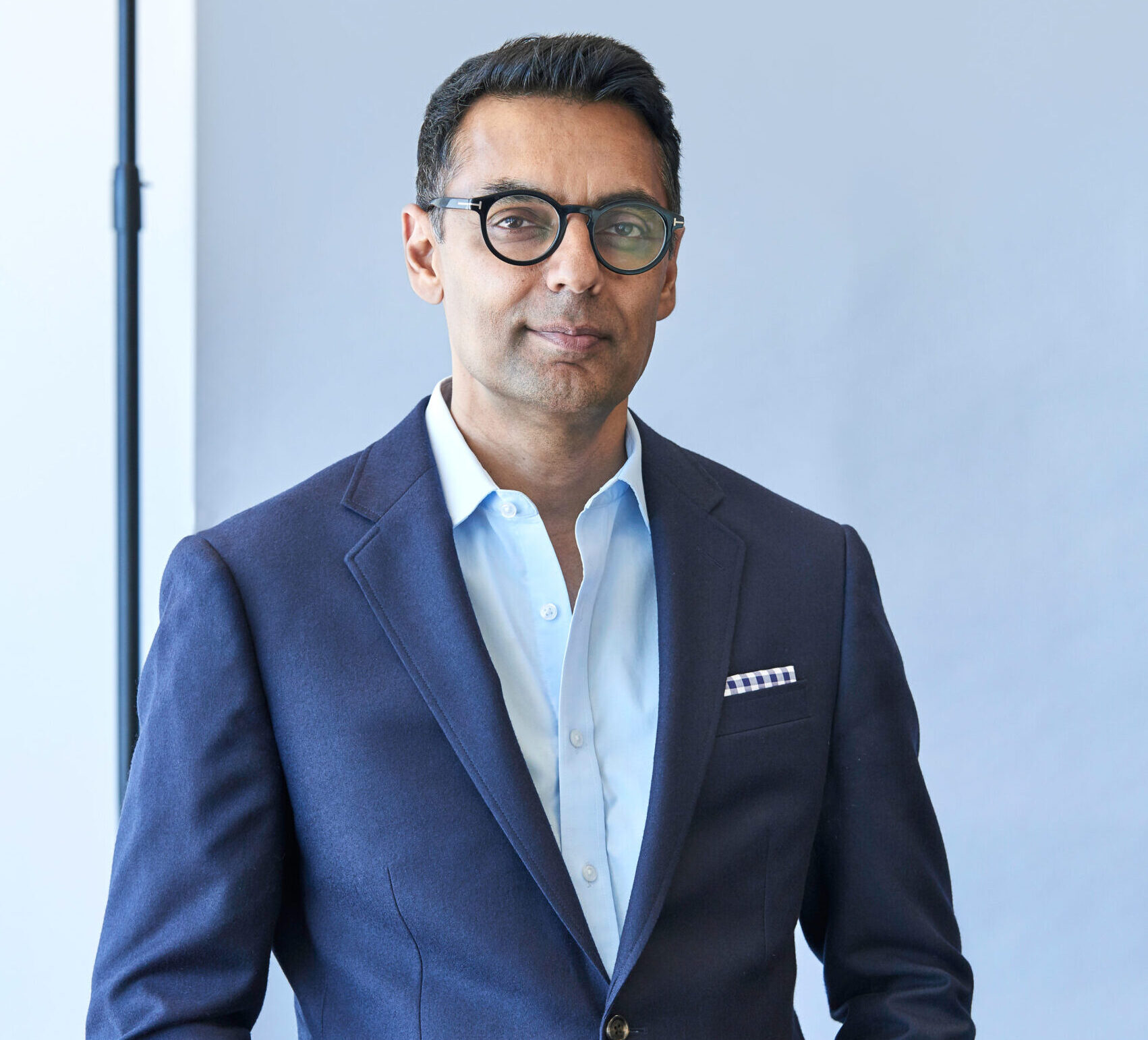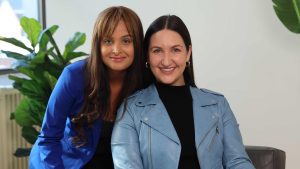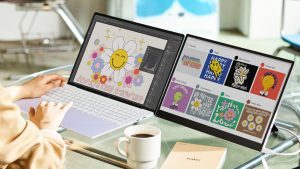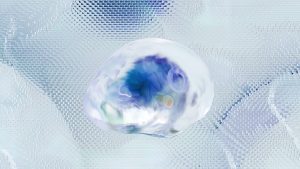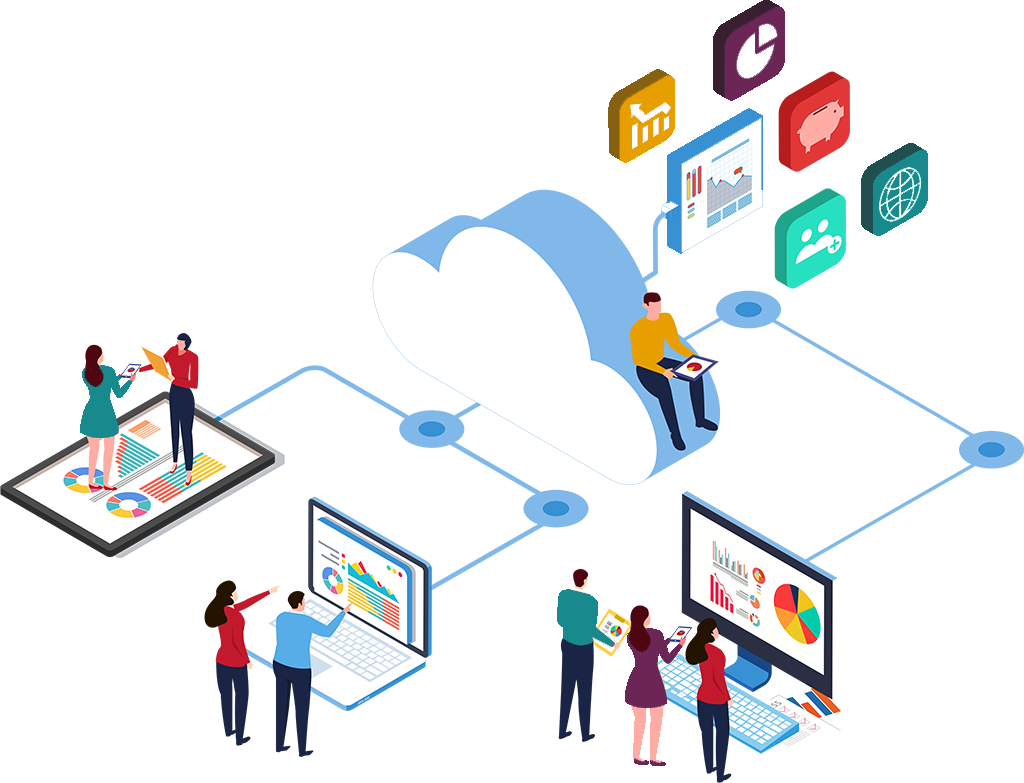At the end of 2019 (a mere matter of months ago, as of this writing), life was dramatically different. As the world collectively celebrated the start of a new decade with optimism and hope, no one could have predicted what would come next: a procession of one calamity after another left in the wake of a global pandemic that has since toppled economies, ravaged emergency rooms, and accrued a global death toll of over 470,000. For once, the Earth seemed to truly stand still.
As it turns out, one company saw the warning signs early on and raised the alarm—six days earlier than the US Centers for Disease Control and Prevention, and nine days before the World Health Organization (WHO). That company was BlueDot, a Toronto-based social enterprise that harnesses artificial intelligence to spot the embers of an infectious disease outbreak and stop it before it spreads like wildfire. Founded by Dr. Kamran Khan, an enterprising epidemiologist and professor at the University of Toronto, BlueDot uses big data to scour the internet (think public health sources, mass media in over 60 languages, and anonymized flight itinerary data) and predict not only the proliferation of infectious diseases, but its dispersion.
As the world has collectively witnessed, tackling a pandemic like COVID-19 requires lightning-fast agility in order to disseminate critical information to key decision makers. No one understands this better than Dr. Khan, who fought through the SARS outbreak and witnessed crucial areas that needed improvement if the world was to stand a chance against future outbreaks. He argues that the answer to combating and outpacing the spread of disease can be found in the entrepreneurial ecosystem, where information is obtained through innovation and accelerated in its dissemination. It’s the reason why he created BlueDot and undoubtedly a critical key to a future free of infectious diseases.
In a discussion with Editor-in-Chief Lance Chung, Dr. Khan (our 2020 #BSBPower50 cover star) shares why he started BlueDot, profit-purpose harmony, and using big data to disrupt disease. Read below for the full interview and explore the Summer 2020 Power 50 issue here.
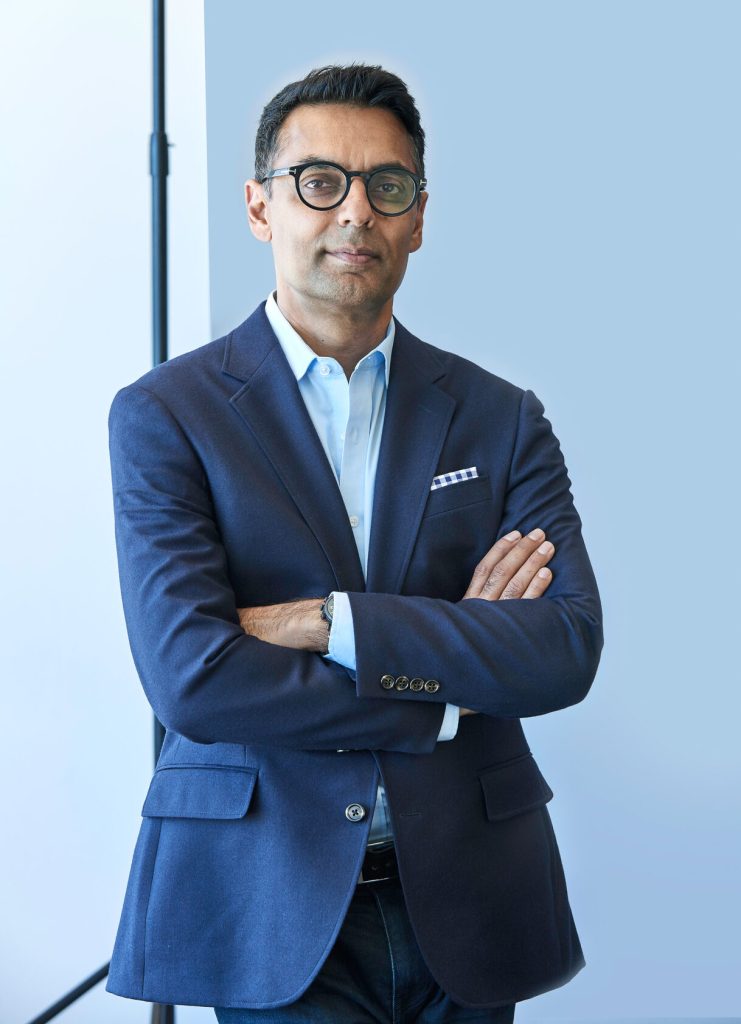

Dr. Kamran Khan, it’s an honour to be speaking with you today. I have so many questions, but let’s start at the beginning. What inspired you to start BlueDot?
It was a bit accidental in some ways. I’m a physician by training and went to the University of Toronto for medical school where I specialized in infectious diseases and public health. I did some of my training in New York and Boston before coming back to Toronto, which was 17 years ago. Shortly after I got here, this virus that nobody had ever seen or heard of before really crippled our city. That virus was SARS.
A colleague of mine got infected and there were deaths across frontline healthcare workers and citizens. It really disrupted business within the city. For me, it was a bit of a realization that we’d never seen anything like this before—and it wouldn’t be the last time.
I’m a professor at the University of Toronto and a scientist at St. Michael’s Hospital, so as an academic physician I spent the next 10 years studying outbreaks of emerging diseases: the swine flu pandemic in 2009, MERS, Ebola, and a wide variety of other outbreaks. Eventually, we came to the conclusion that one of the key things that was needed was the ability to move really quickly because outbreaks spread around the world incredibly fast. As an academic, you need to move even faster to research and publish. The ability to translate that kind of knowledge into something that’s actionable, and do it really quickly, can be difficult because the environment doesn’t necessarily work on those timelines to disseminate knowledge in days or even hours. So, I approached the Ontario Centres of Excellence who then introduced me to MaRS. The startup ecosystem here was really helpful in helping me wrap my head around the fact that maybe I just needed a different way of disseminating these kinds of insights and accelerating discovery and innovation—and that vehicle was a business.
In the fall of 2013, I ended up founding BlueDot and now I’m on a mission to build a digital, global, early warning system for infectious diseases. Today, we’re at about 60 staff.
It’s been a busy few years for you.
We’ve been working on the digital early warning system day-in and day-out for the past six-and-a-half years. People would ask us why we were focusing so much of our time, energy, and resources into building this system. What I really saw was that our world was changing and mother nature was telling us something between all the various outbreaks we’ve seen in the last 20 years. We knew that it wasn’t a matter of if but when we would have a really disruptive type of pandemic. So this is what we have been focusing on. We’ve really been able to make use of digital infrastructure to help in the early detection and response to COVID-19.
At BlueDot, we have the DNA of an academic institution and ultimately use the business to implement and disseminate scientific knowledge using technology.
The timing was important for a company like yours to come along. How does BlueDot work, exactly?
Our digital early warning system is broken down into key components that we refer to as the four D’s: early detection of threats; anticipating how threats will disperse around the planet because they move very quickly; anticipating disruption; and dissemination in terms of how we get insights into the hands of the audience who really needs it. Ultimately, our belief is that this is really about empowering the whole of society.
This is not information that can be sitting in the hands of a small group of public health officials. We need to be empowering organizations more broadly in society. I’ll go back to the first “D”—detection. One of the things that we learned about outbreaks during SARS was that if we rely on official reports from public health and government agencies around the world, information may not always come in the most timely manner and we may be waiting longer than we would like. We’ve been using the internet as a medium to gather information, early rumours, and news of potential outbreaks from unofficial sources. This includes the world’s online media and a wide variety of health blogs and forums, as well as information that is coming officially from government health organizations.
Now the internet is, of course, a vast medium. There are all these different languages and it’s all unstructured text data. This is where we’ve been using what is called natural language processing and machine learning, which broadly fall under the umbrella of artificial intelligence (AI). We use these types of analytical tools to process and make sense of vast amounts of data currently in 65 languages, and we’re tracking news of outbreaks involving over 150 different diseases and syndromes. Experts in infectious diseases have worked with our data scientists to train this engine to build algorithms that can ultimately replicate human judgment about what we need to be paying attention to and what we don’t. Ultimately, this engine is operating every 15 minutes around the clock, 24 hours a day, 365 days a year. It’s a metaphorical smoke detector that is looking for early cues that there may be a threat emerging.
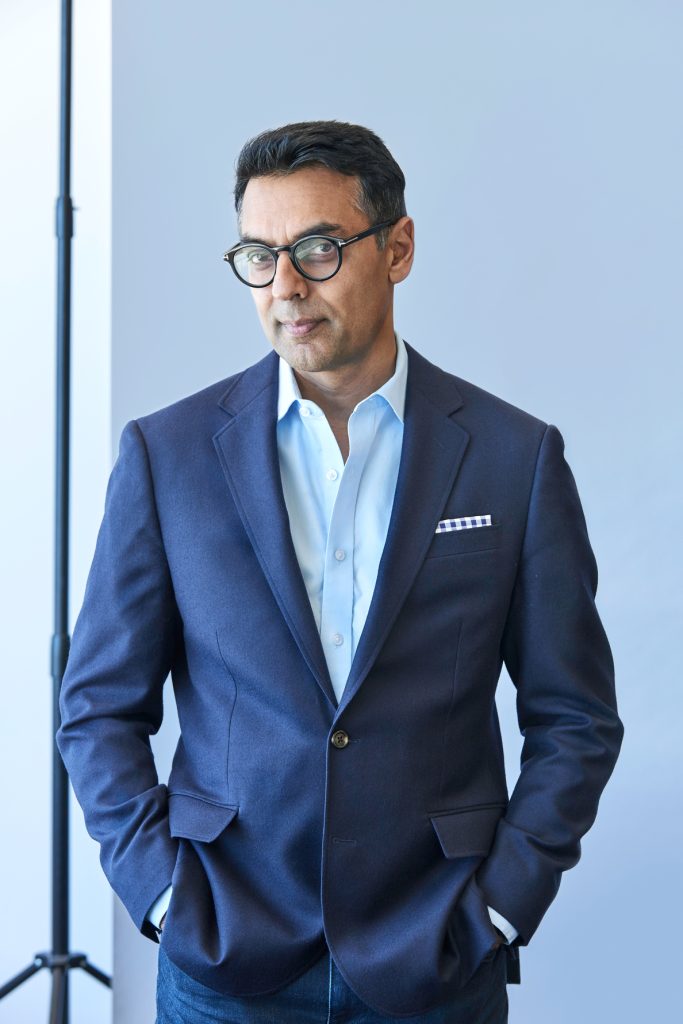

Let’s go back to December 31st, 2019. It’s the morning of New Year’s Eve. While everyone was getting ready to celebrate the new year, your experience was a little different that day. What happened?
The engine that scans the web woke up on the morning of December 31st and put forward an outbreak of pneumonia in Wuhan. A lot of people probably hadn’t even heard of Wuhan by that time, and there were a couple of dozen cases there. The pneumonia was of unknown cause and it seemed to be centered around this wet market in the city. At that moment, we didn’t know that it would turn into a pandemic but there were a number of parallels with the SARS outbreak 17 years earlier, which started in Guangdong province and was also thought to have originated from an animal. We knew that it was something that warranted our close attention.
We used AI to process, organize, and structure vast amounts of data, but then it came down to our team to review [the data]. We asked ourselves at that moment if it was really 27 cases, or if it was possible that there were more. We know with many new diseases that are newly emerging that you’re often only seeing the tip of the iceberg. It might be a bigger problem because there are no tests for it. Our early warning system is actually connected to all of the flight data around the planet—the schedules of aircrafts moving around the entire world, as well as the anonymized flight itineraries in a year of over four billion travelers boarding commercial flights. Within a few seconds, we could see all of the flight paths of aircrafts around the world. We analyzed the final destinations and some of the places that we thought would be at greatest risk if this outbreak were to spread beyond mainland China. It turns out that 12 of the 20 cities we listed as being at greatest risk were among the very first in the world that were impacted.
Ultimately, it’s about understanding how people and populations are moving, and where we should be anticipating the next pandemic. We’re not reacting, but rather anticipating its potential arrival. That’s how the morning of December 31st unfolded. Within two hours, we moved from detection to assessment of dispersion to sending a notification out to our various clients and partners in 12 countries.
You’re collecting all of this information that is being uploaded and published online. What do you do with the data once you’ve collected it? How do you act on it and make sure that it’s being used properly?
You’ve raised a few really important points. First of all, how is the [data] being used properly? One of our core values comes from an oath that I took when I became a physician, which is to do no harm, think really carefully, and put a lot of rigor into the work that we do. At BlueDot, we have the DNA of an academic institution and ultimately use the business to implement and disseminate scientific knowledge using technology.
The other point that you are alluding to is around the diversity of data and the complexity of this problem. When we talk about big data, it’s often discussed in terms of volume and velocity. The problem with infections is variety. It’s not about managing terabytes of data or information that’s streaming with a very high frequency, it’s the fact that infectious diseases are a very heterogeneous, diverse group of things. They’re all very different. All of this data that we’ve brought together, they’re not insights. What is needed is the ability to transform very diverse data into an insight, and an insight into an action. That has to happen very quickly but going from one to the other is complex. This is not a simple problem to tackle and it requires not only a diverse set of data, but a diverse set of perspectives and expertises to derive. Insight is only useful if it is turned into an action, and that is a translational challenge. It’s about working with partners to figure things out in advance of an outbreak or a crisis and determine a fire escape route. You don’t want to be doing it when the house is on fire, you want to do it in advance so you don’t lose the opportunity to make use of it.
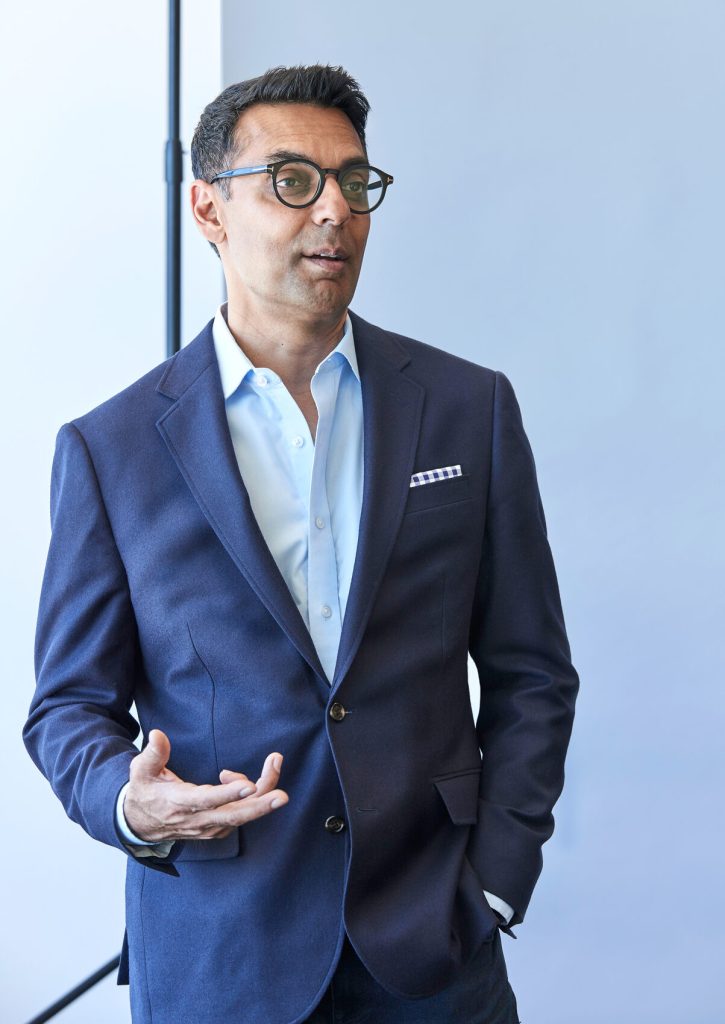

Canada has made some incredible contributions to the advancement of artificial intelligence. As a leader in the field, how do you think our dialogue around big data and infectious diseases needs to change as we move forward?
Diseases move incredibly quickly and can have devastating health, economic, and social consequences. We have to be faster, smarter, and better coordinated if we are going to prevent or mitigate the consequences. We need to be using all the tools that we have available to us. On one hand, the world is changing through globalization where we are seeing the emergence of these types of diseases and outbreaks, and they’re all occurring with greater frequency, scale, and consequences. If we look back, there’s never been a 20-year period in human history with the outbreaks that we’ve seen. In 1999, West Nile showed up in North America and changed the entire continent forever. We forget that it was here before, as well as SARS, the swine flu, Ebola, Zika, and many others. On the other hand, the world is changing in ways that can really play to our advantage. We have growing access to big data, and advanced analytical tools like machine learning to make sense of this data. Our digital technologies can literally spread knowledge around the world faster than any outbreak. So, we have the raw materials needed to move quickly.
The other challenge is in health and medicine. As a sector, we have been a bit slower than other industries. One of the reasons is because we’re tackling very complicated problems. We have complex issues that need to be sorted through, so there’s a lot of rigor needed. We need to be using the tools at our disposal to our advantage so we can better protect ourselves.
We’re a deliberately eclectic mix of physicians, veterinarians, ecologists, data scientists, geographers, epidemiologists, computer scientists, and engineers.
Aside from industry pace, what do you think are the hurdles that prevent us from embracing big data fully?
Part of the issue is there’s a technical challenge. The problems that we’re dealing with in health, and in particular infectious diseases, are not ones that you can tackle with one set of expertise. You could put a thousand data scientists on this problem and not get very far. You could put a thousand physicians on this problem and not get very far. One of the things that we’ve built at BlueDot is a diverse set of skills. We’re a deliberately eclectic mix of physicians, veterinarians, ecologists, data scientists, geographers, epidemiologists, computer scientists, and engineers. Every one of us brings a slightly different perspective to this problem, which is needed in order to derive meaning.
One of the reasons why I started BlueDot was because I wasn’t necessarily seeing a diversity of skill sets and perspectives in the other environments that I was interacting with. In the academic sector, we are largely birds of the same feather who tend to hang out together. When it comes to making use of big data, there is a vast amount of untapped, latent potential that we haven’t really made full use of. Culturally, data is one of these interesting things where people tend to hold it close to themselves and not share it. We have to think of data as a vital asset and develop a strategy where we can harness the full potential of it. Not just domestically, but integrating it with diverse sets of data to understand what’s happening around the planet. Canada does not have a closed population. We’re a microcosm of the world and if there is an outbreak or a threat that appears anywhere in the world, there’s a pretty good chance it’s going to find its way into our country.
When it comes to the data that you’re harnessing, where does the balance between human intelligence and big data come into play?
We’ve always been of the mindset that we need to all be playing to our strengths. Machines can process vast amounts of data and replicate certain types of processes. They don’t need to sleep and can operate 24 hours a day. Humans bring a higher order of understanding. If I think about our early detection of COVID-19, it was our understanding of history that turned out to be very relevant there. If you think about machine learning and AI, we don’t have 5,000 outbreaks of SARS to develop a set of algorithms to train a machine. We’ve got an understanding of human judgment and history, so how do we bring it all together? We’ve always seen the two as complementary. Let a machine do what it does well, and let humans do what we do best.
These are not two conversations that are mutually exclusive.
Yes, absolutely. They are complementary.
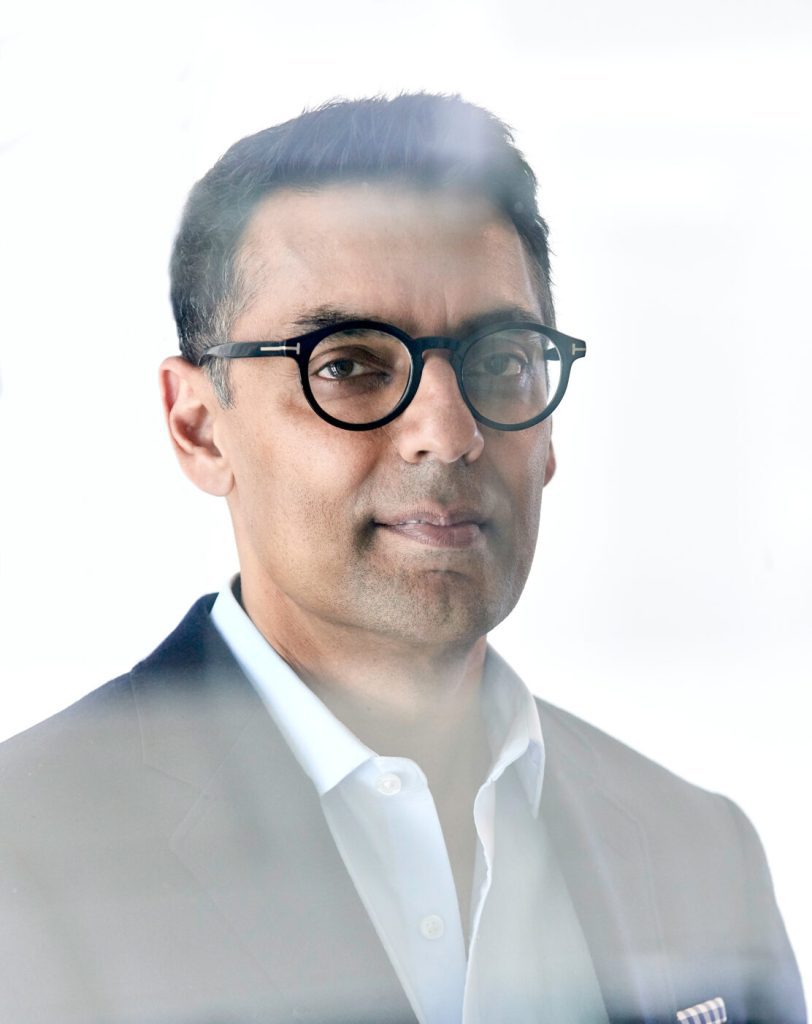

Earlier, you mentioned your mission as a company. What are the values that ultimately guide BlueDot’s purpose?
We are very much a social impact-oriented organization [that uses] business as a vehicle to accelerate innovation and develop solutions that could have a positive impact in the world. We have five core values. Our first is that we are driven by purpose, which is how we bring a lot of the talent into the organization. People are excited about doing something that’s bigger than themselves. That is a driving force for us when we recruit highly inspired, motivated, and talented individuals.
One of our other core values comes from the Hippocratic Oath. First, do no harm and recognize that we’re not talking about using machine learning to optimize something in a video game. We’re talking about people’s lives and it’s incredibly important that we be very precise and thoughtful. This is where we bring in the DNA of an academic institution around a lot of the rigor of testing around our work.
Our third value is thinking without borders. In a sense, it’s a metaphor around diseases and how they don’t respect borders and can jump across the planet. But it’s also about recognizing that we need mindsets and thought processes that are breaking down silos of conventional thinking because the problems that we’re tackling have perhaps never been tackled before. You have to think outside the box and encourage risk-taking because that’s what you have to do to develop innovative solutions.
The fourth is around diversity. I know that it can sound like a cliche that you need a diverse group of people to tackle complex problems, but in my experience, I have found that to absolutely be the truth. We could not tackle the problems we are taking on without having someone who understands the biology of a mosquito, or how to translate data streaming from a satellite, or how a microbe in one animal will jump over into humans, and so on and so forth.
Our last value comes from another physician, Albert Schweitzer, and it’s really paraphrasing a quote—success comes from happiness. We are really trying to make sure that we are empowering individuals to be enabled and happy in what they are doing. I’m here as the founder and CEO to lay out the vision and direction, but it’s important to have a motivated and inspired group of people who feel valued. I think this is how you create an organization where everyone lifts each other up, where everyone is rowing together and contributing to the overall mission.
As a for-profit social enterprise, how do you balance the needs of your client and that of public health, especially if you have a client that is, for example, a private health insurer in the US?
It’s a really important question. I founded BlueDot not because I was looking for an additional job beyond working as a physician and an academic, but because there was an unmet need and opportunity to connect people’s lives more broadly. With respect to COVID-19, we were sufficiently concerned about this way back in the early days of the new year and took our analysis, wrote it up into a publication, and sent it off to an open-access peer-reviewed scientific journal. To my knowledge, I believe that it is the first publication in the world on COVID-19 in scientific literature. Why did we do that? Firstly, we don’t do that for the vast majority of outbreaks appearing around the world every day. In this case, we did so because we were concerned and wanted to make sure that we had put forward our data and analytics so that they could be peer-reviewed and accessed by the public health community. With respect to balancing public interest as a private sector organization, we use business revenue to reinvest in research and development, accelerate innovation, and build out solutions.
I founded BlueDot not because I was looking for an additional job beyond working as a physician and an academic, but because there was an unmet need and opportunity to connect people’s lives more broadly.
As a professor that did it for years, writing grants is not a particularly timely process and can take a long time to generate capital. When your grant runs out, you’ve got to figure out what to do next and it’s a cumbersome process. What we’re doing now is generating jobs and insights that are protecting populations. We’re selling and licensing our technologies to countries around the world that are improving lives and allowing us to reinvest revenue because time is our most valuable resource. The clock is ticking right now, we just don’t know when the next [pandemic] will appear. From my perspective, this is a way to rapidly accelerate and drive innovation.
Secondly, it’s important for us to recognize that in order to tackle these kinds of threats, we need to be empowering the whole of society. It’s not enough for an insight to sit in the hands of a group of people in the public health agency. These insights have to get to the frontlines of our healthcare workers and hospitals. Sick patients don’t go to the public health department, they go to the emergency department. While many of us might think that these insights are delivered there instantaneously, it’s not the case. We need to have more astute clinicians and empower our frontline healthcare workers with meaningful insights so they can protect themselves and the rest of us.
Lastly, it’s important to recognize that industry can be a part of the solution. One of the things that we’ve learned with COVID-19 is that companies with global footprints are trying to think about ways to protect their employees and, in some cases, their customers, as in the case of an insurance company. We are incentivized to anticipate disruptions in business continuity or broken supply chains that could really impact the financial resilience of a business. So, there’s an unmet need where our approach has built out an early warning system to disseminate insights not only to the public sector, but to healthcare and private sector organizations. We all need to be taking action if we’re going to effectively mitigate this kind of risk.
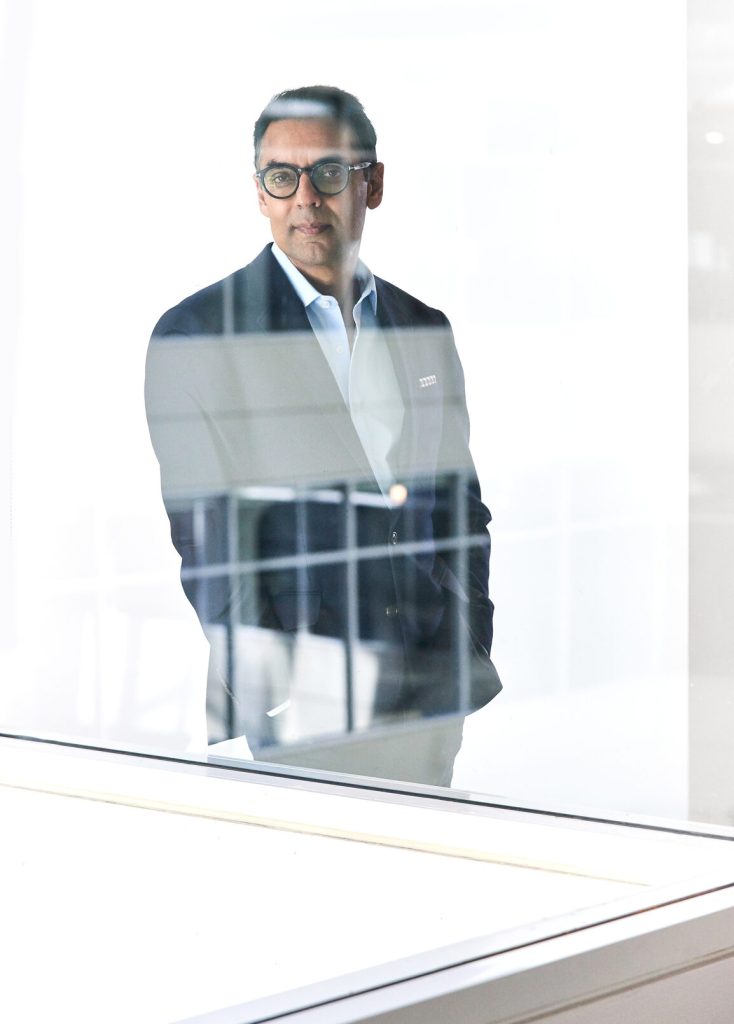

It contributes to this bigger conversation around profit and purpose, and whether the two can coexist or if they should operate as church and state.
I think it raises a really important point. Before founding BlueDot, I thought profit must mean that it comes at the expense of purpose. What I’ve really come to learn and believe is that profit and purpose do not have to be a zero-sum game. You can be profitable and make an impact that benefits lives. As long as you bring your values with you, and align with investors and clients who share those values, you have an opportunity to realize multiple bottom lines.
profit and purpose do not have to be a zero sum game.
What do you think is the biggest lesson that we’ve learned from COVID-19 when it comes to early detection and harnessing big data? What do we need to do in order to prevent something like this from happening again?
In public health and medicine, we often talk about different levels of prevention—primary, secondary, and tertiary prevention. We need to think about this problem in the same tiers. Primary prevention is really about preventing something from happening in the first place—a vaccine would be an example here. When we think about COVID-19, what we are dealing with today is the symptom of a much broader condition. We are dealing with the fact that our world is changing. How we interact with the world around us is the catalyst to these types of outbreaks.
About three-quarters of all new emerging diseases that we have seen have their origins in animal populations and have moved over into humans—SARS, HIV, Ebola, Zika, swine flu, H1N1. Mother nature is trying to tell us something, and that [has to do with] the way we are interacting with the world around us, whether through agricultural industrialization, disruption of wildlife ecosystems, climate change, or the mass consumption of wildlife. These factors are catalyzing the emergence and spread of many infectious diseases that are having devastating consequences to humanity. Today, we are very focused on COVID-19, and we should be because this is the crisis that we’re in right now. What I hope we don’t lose sight of is the fact that this is a moment for reflection as well. We have to ask ourselves how we got here in the first place? Why are we seeing more outbreaks than we’ve ever seen before? This is an awakening.
The second piece is secondary prevention, which is early detection. This would be akin to getting a colonoscopy to make sure you don’t have colon cancer, or you’re detecting it before you even know it. What BlueDot is building is an early warning system to detect threats at the earliest stage possible. If there is one key lesson that we have learned, it’s that time is everything. It is our nonrenewable resource; we don’t get it back and we have to use it wisely. If we intervene early, we can change the code and we might be able to prevent an outbreak or change the course of one to mitigate its consequences. Time is critical. An early warning system is needed to have a bird’s eye view of what’s happening around the planet, understand risks of dispersion, and what kind of disruption might occur so that we can respond in a way that is commensurate with the risk.
Tertiary prevention is about how we minimize harm once something is already underway. In the case of COVID-19 where the outbreak is underway, how can we quickly detect cases, identify contacts, and minimize consequences? Right now, we’re focusing on tertiary prevention to prepare for what may be coming in the weeks and months ahead.
When we look at how we can prevent this from happening again, we have to look past tertiary prevention and firefighting to mitigate and manage risk. We have to think about secondary prevention and early warnings in order to use our time effectively and act appropriately. We have to also think further upstream about primary prevention—why are things happening in the first place and what actions do each of us have as global citizens? If this has taught us anything, it’s not just that every human’s health is connected around the world, but that we’re also connected to every other living system on our planet. That is an important piece for us to not lose sight of; it’s incredibly important for us to reflect on this. We may not have the capacity to spend a lot of time to think about it at this moment, but it will be very important for us to look back and ask ourselves how we avoid getting into the same position again. If we don’t, we may find ourselves back here sooner than we would like.


